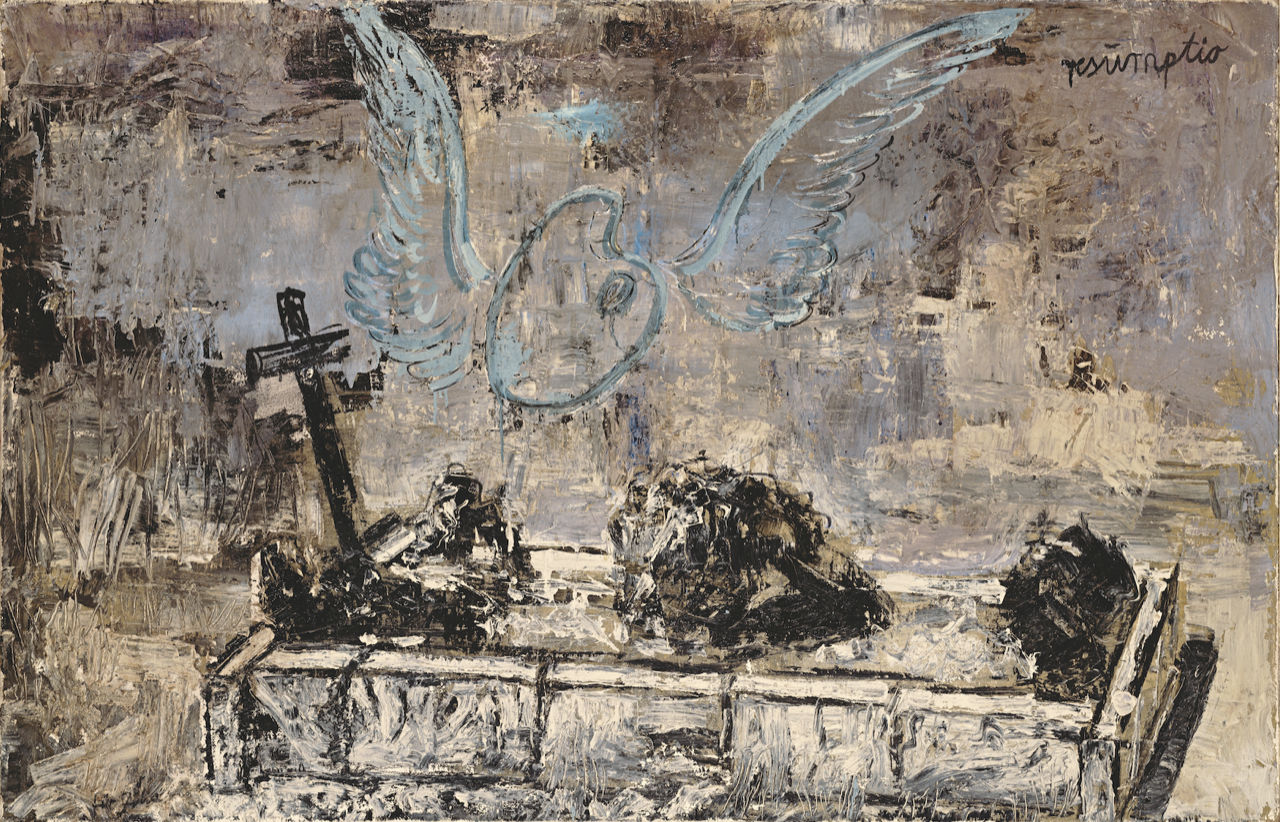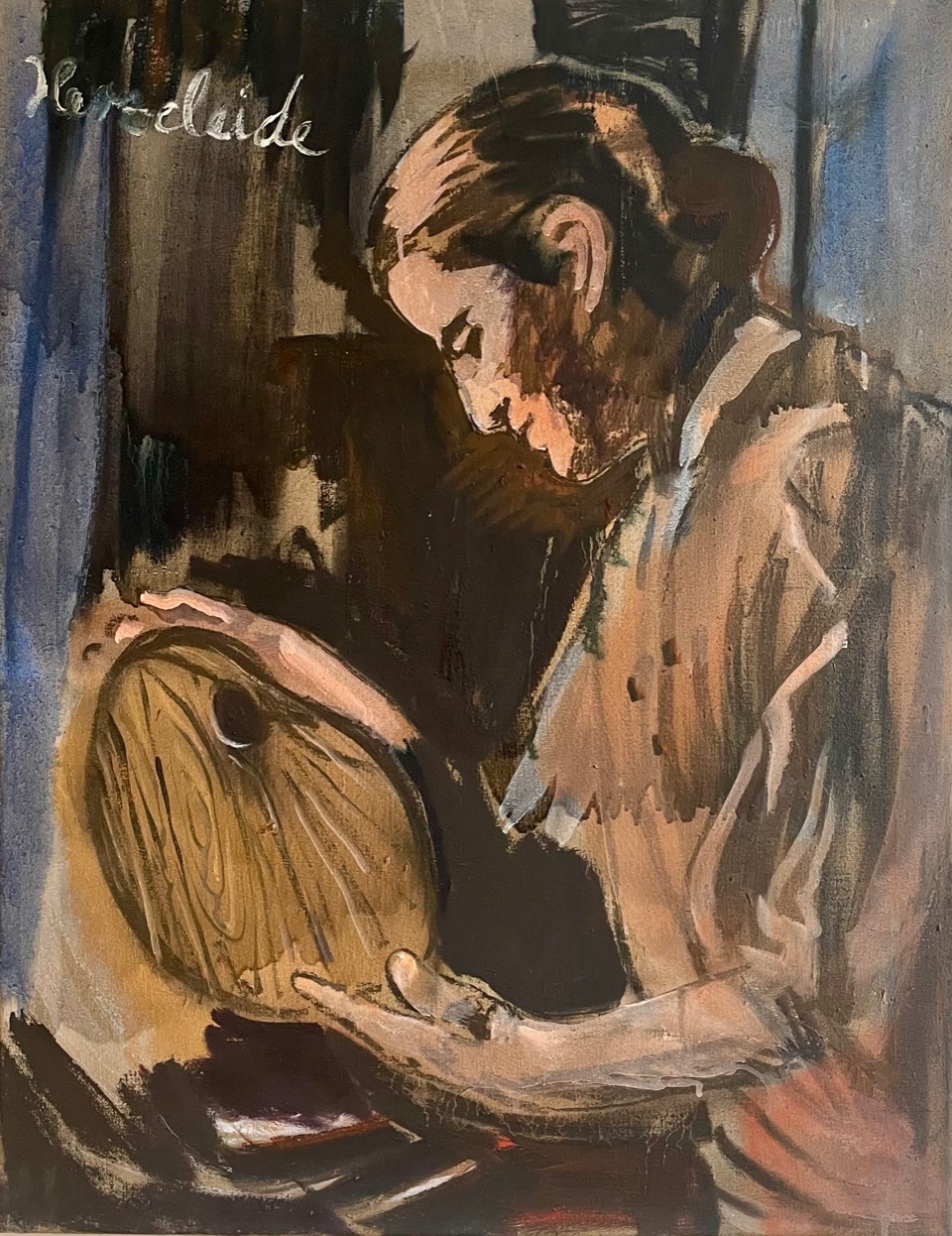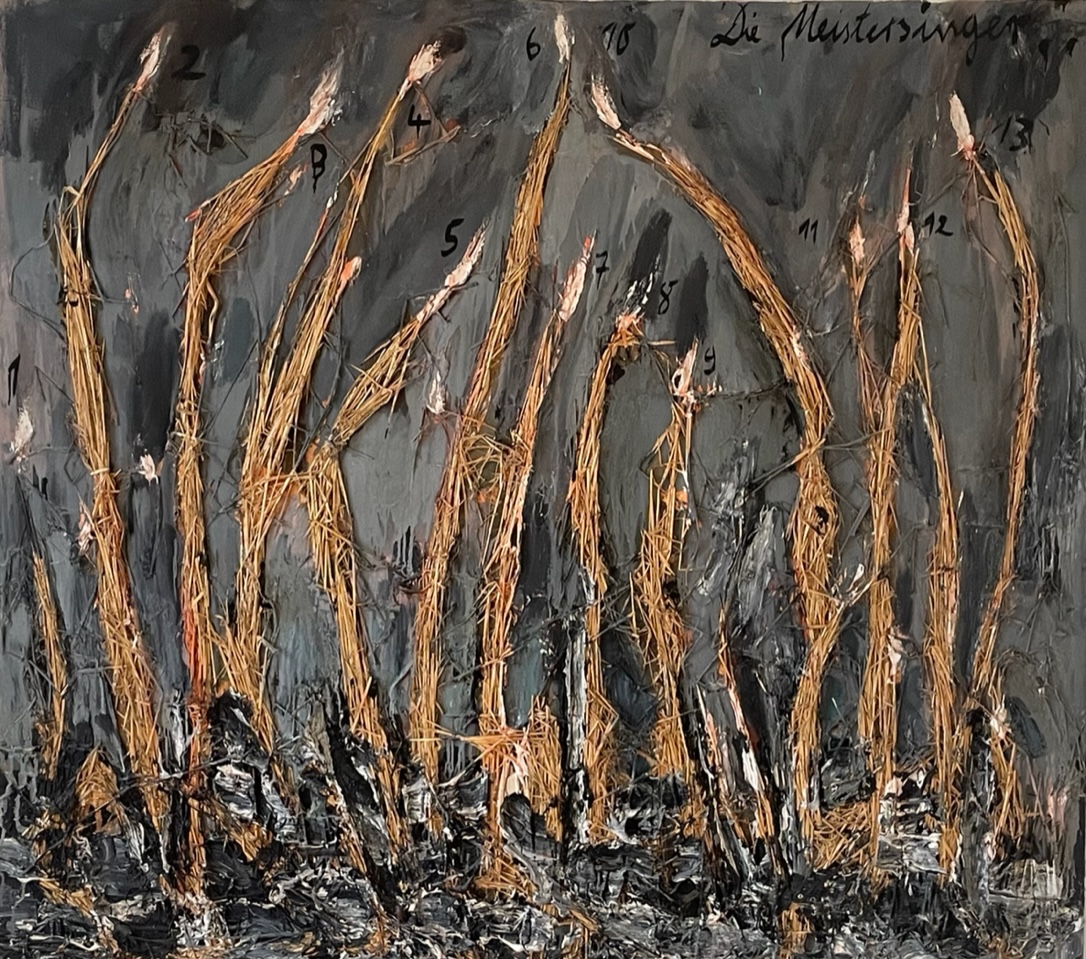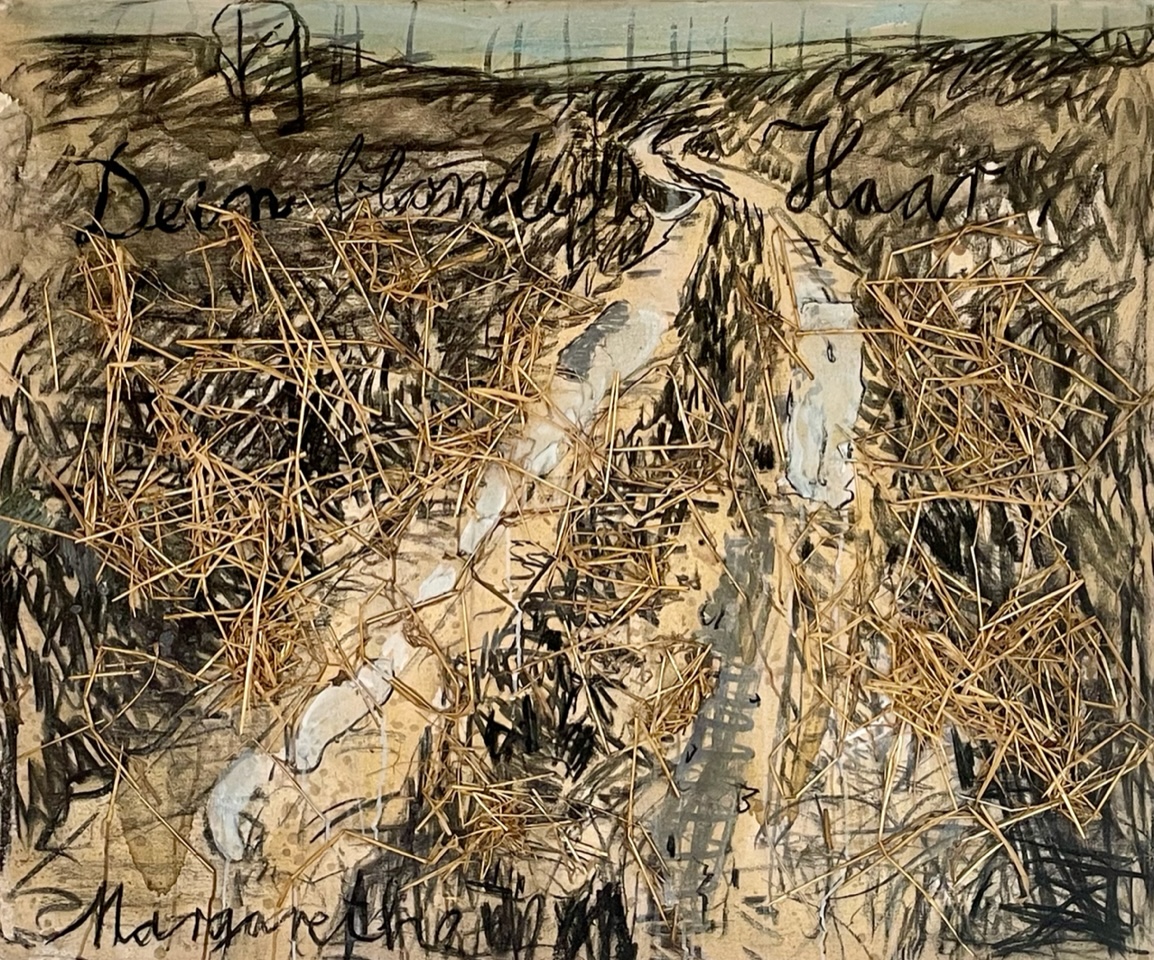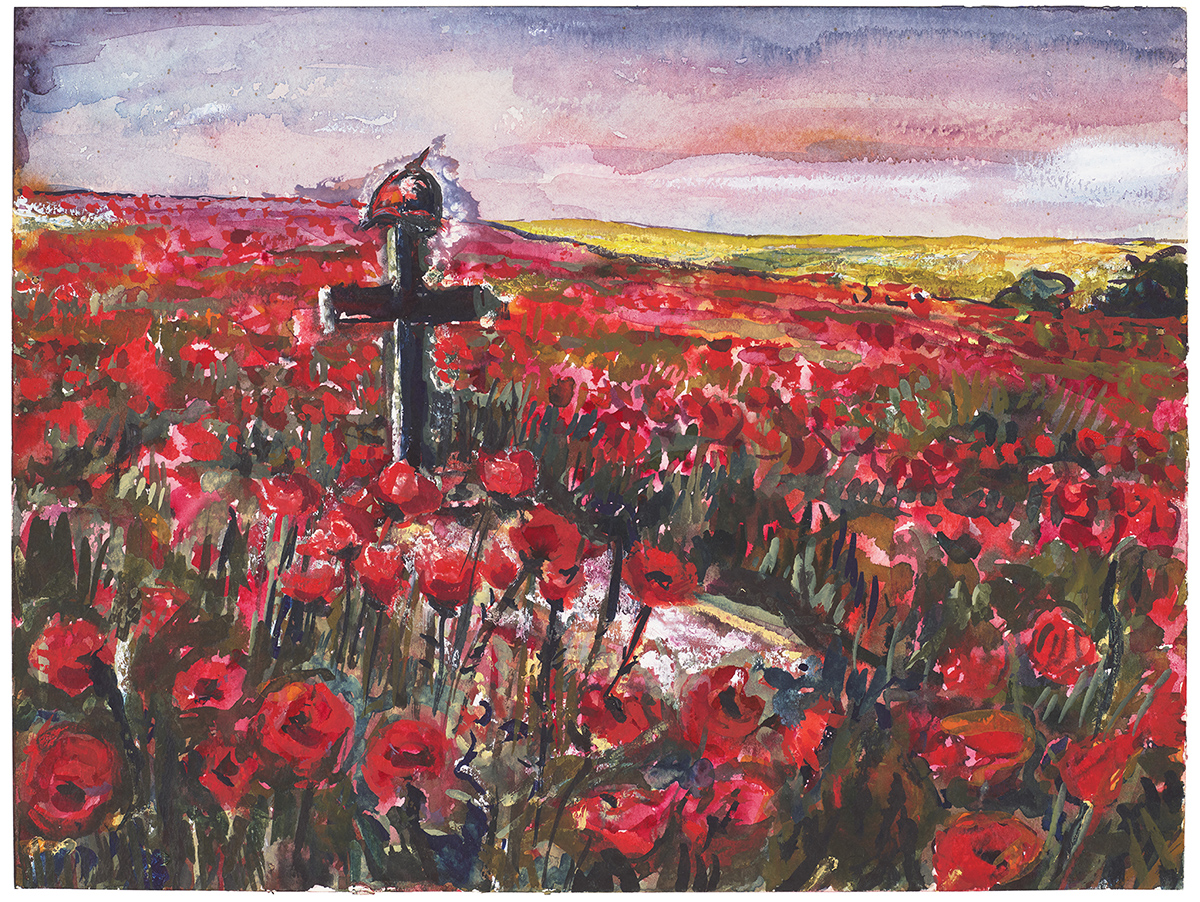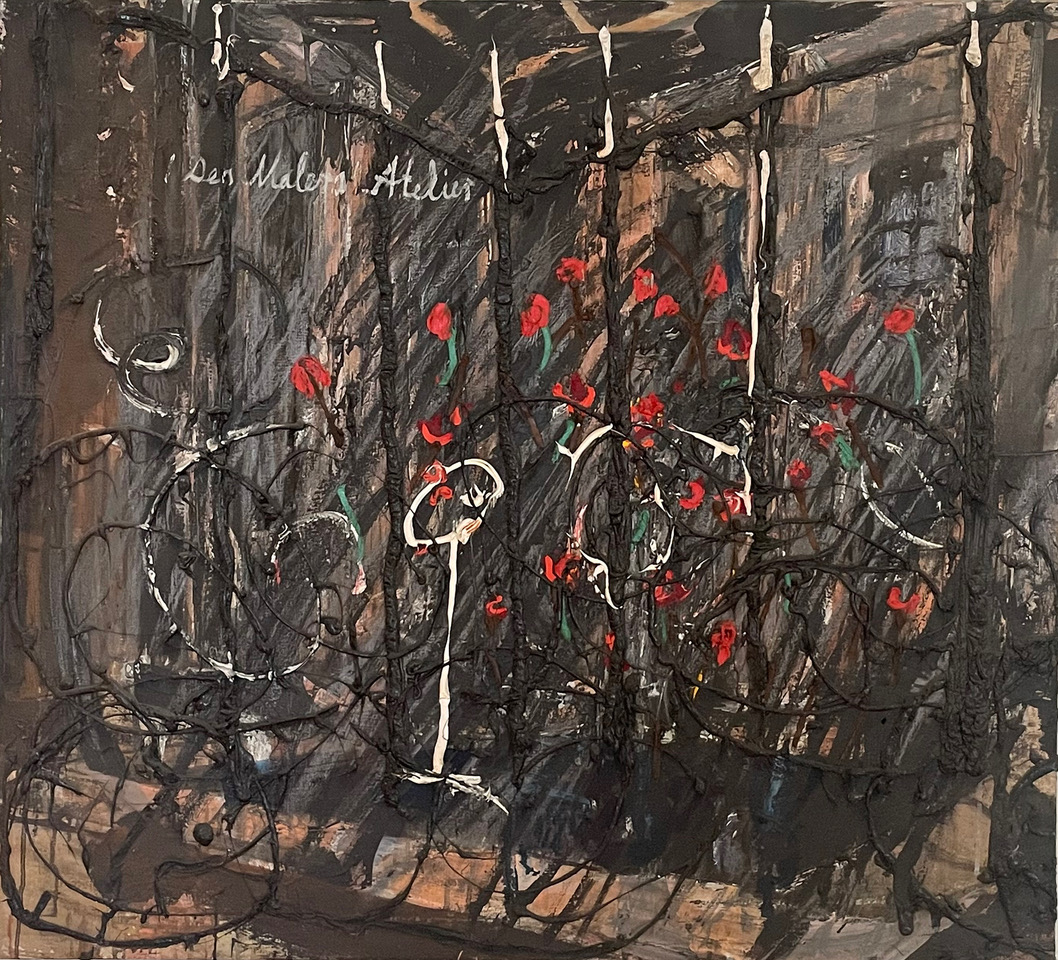In its opening exhibition, Haus Kiefer is showing early works by Anselm Kiefer, which were created between 1971 and 1986 in his studios in Hornbach and Buchen, in the Odenwald.
These works contain themes that have been repeatedly present and further developed in his artistic oeuvre to this day: landscape, history, religion, mythology, and poetry—in particular poems by Paul Celan, Victor Hugo and Walther von der Vogelweide.
One focus of the exhibition is on paintings which include the palette—a symbol that Kiefer introduced into his artistic language in the mid-1970s. Standing for both the artist and art, it was one of his favorite motifs especially until 1981. It still appears in his work today.
The palette—just like the role of the artist it symbolizes—proves to be ambiguous in Anselm Kiefer’s art. Some of the palette pictures refer to the positive power of art. In Resumptio (1974), for example, a winged palette seems to rise from a grave as a sign of hope. The title of the painting combines the word resurrectio, the resurrection of Christ, with assumptio, the ascension of Mary, and promises resurrection through art.
In Operation ‘Hagenbewegung’ and Operation ‘Wintergewitter’ (1975), dark, snow-covered furrows in the fields are framed by the outline of a pallet. The inscriptions on the paintings quote code names of Hitler’s military operations in Russia, while the black fields allude to the scorched earth tactics used by the German troops to burn down towns, villages and fields during their retreat in order to leave behind unusable land for the enemy. Like a camera lens, the palette here selects a section and invites the viewer to perceive the landscape from a different perspective—namely, that of the artist.
Kiefer dedicated the early landscape painting For Julia – Heaven and Earth (1972) to his first wife Julia, with whom he moved to the Odenwald in 1971. Through its inscription, it alludes to the role of art, which, according to Kiefer, is a mediator between heaven and earth that creates a connection between the material and spiritual realms.
The inscription on the painting Poland is Not Yet Lost (for Julia) (1978) quotes the first line of the Polish anthem of resilience that embodies an unyielding desire for freedom and national unity. The tank painted on the furrows and the horse facing it, on the other hand, refer to the hopeless battle of the Polish cavalry against Hitler’s tanks at the beginning of the Second World War. Nazi propaganda capitalized on this event by accusing the Polish horsemen of overconfidence and fanaticism, while boasting of their own technological and intellectual superiority.
In 1974, Kiefer had already depicted the Sea of Galilee and the mountains mentioned in the Bible— Horeb, Carmel and Sion—in oil and watercolor. Following his trip to Israel in 1983-84, themes from the Hebrew Bible and the Old Testament became even more important, inspiring him to create works such as Exodus from Egypt, The Red Sea and Lot’s Wife.
Kiefer’s preoccupation with National Socialism and his questioning of German culture and identity after the Second World War is also evident through his interest in the work of Richard Wagner. Due to Hitler’s admiration of the composer, Wagner’s music was appropriated by National Socialism for propaganda purposes and elevated to the status of a state cult. In Herzeleide (1979) and The Mastersingers (1981), Kiefer refers to the Wagner operas Parsifal and The Mastersingers of Nuremberg. This group of works not only examines the instrumentalization of Wagner’s music by National Socialism, but also questions the extent to which the composer, his music, and his anti-Semitic writings served as intellectual precursors to the ideology of the Third Reich.
At around the same time, Kiefer was working on the group of works entitled Death Fugue by the poet Paul Celan, which thematizes the horrors of the National Socialist extermination of the Jews. Celan, born in 1920 as the son of German-speaking Jews in Romania, wrote the poem in 1944-45 in a labor camp in Czernowitz. His parents both died in concentration camps. The poem uses complex symbolism to describe the fate of the Jews and the daily routine of a German officer in such camp.
In Your Blonde Hair, Margarete and Your Ashen Hair, Shulamith from 1981, Kiefer quotes the contrasting pair of two women, which is a leitmotif of Todesfuge. Margarete refers to Gretchen from Goethe’s Faust, who allegorically stands for a blonde German woman, while Sulamith refers to Sulamith from the Song of Songs in the Old Testament. Sulamith’s hair, described as ‘ashen,’ symbolizes the Holocaust.
In Kiefer’s works, however, art is often exposed to a threat that it cannot always withstand: In Et la terre tremble encore (Waterloo) (1982), a palette made of clay is broken into pieces. The title of the painting is taken from Victor Hugo’s poem L’expiation (Atonement), which describes Napoleon’s defeat at the Battle of Waterloo (1815) and denounces the absurdity of war. Kiefer was impressed by Victor Hugo’s depiction of the landscape, which ascribes human feeling to it and whose bleakness and coldness reflect the suffering of the soldiers and the desolate state of the army. For Kiefer, there is no innocent landscape; rather man and landscape form a historical symbiosis.
In the watercolor Field of Poppies (1974-75), the grave of a soldier lies in the middle of a field of red poppies. The use of the poppy as a symbol to commemorate fallen soldiers emerged in English-speaking countries after the First World War. Based on the poem In Flanders Fields by the Canadian medical doctor John McCrae, the flower is intended to both remind us of the blood-soaked fields in Flanders and give hope that life will go on. It is said that the first thing to bloom on the freshly dug soldiers’ graves was the corn poppy.
In contrast to conventional studio depictions, in which the artist provides an insight into the place of his work, The Painter’s Studio (1979-80) shows a small white painter’s palette placed on a stand, as if a monument. It seems to be simultaneously imprisoned and protected by a structure of bars. For Kiefer, the studio is above all a space of transformation. The poppies surrounding the palette symbolize regeneration and the possibility of new life.
